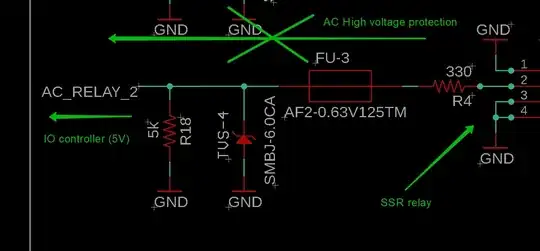To protect the low voltage DC circuit (5 V) from receiving high AC voltage (230 V), I want to use the TVS diode, which closes the low voltage circuit to ground and blows the fuse. I hope this is a good option for protecting low voltage circuits with integrated circuits.
Since in normal mode the circuit operates on direct current, I can supply a unidirectional TVS diode. But we want to protect the circuit from AC, it uses a bi-directional TVS diode.
The diode will be located between the ground and the power line (5 V).
Question: A unidirectional diode should discharge excess voltage into the ground, but what will a bi-directional diode do? Could this translate the excess voltage into a low voltage circuit instead of ground?
Circuit:
From the left there is an output from the IO controller (5V). On the right is a solid state relay. If the solid-state relay trips and high voltage is supplied to the controller, the TVS diode closes to ground and the fuse blows. R4 should limit the current. High voltage should not reach the controller. The diode power, most likely, will be 600 watts, for it there is a place on the board.
